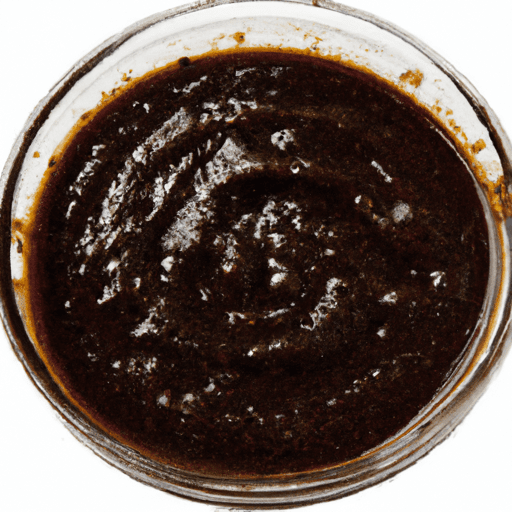The Rich and Delicious World of Brown Gravy
Brown gravy, the heart and soul of comfort food, is a versatile and delectable sauce that brings dishes to a whole new level. With its rich and velvety texture, savory flavor, and warm brown color, it has become a staple in kitchens around the world. In this blog post, we’ll dive into the tantalizing world of brown gravy, exploring its taste, common uses in cooking, nutritional value, and uncovering some fascinating history and fun facts along the way.
The Taste of Brown Gravy
Brown gravy is all about depth of flavor. It’s the essence of slow-cooked goodness, delivering a taste that is simultaneously savory, umami-rich, and slightly sweet. The combination of rich meat drippings, aromatic vegetables, and a flavorful broth creates a symphony of deliciousness that can elevate any dish. Whether it’s poured over a juicy steak, drizzled on roast chicken, or smothered on mashed potatoes, brown gravy adds an indulgent touch that enhances the flavors of the entire meal.
Common Uses in Cooking
Without a doubt, brown gravy is a true culinary workhorse. Its versatility makes it an ideal companion for an array of dishes. Here are some of its most common uses:
1. Roasts and Steaks
There’s nothing quite like a perfectly cooked roast or steak topped with a generous serving of brown gravy. The deep, meaty flavor of the gravy complements the tenderness of the meat, creating a mouthwatering combination that is hard to resist.
2. Meatloaf and Meatballs
Whether you’re making a classic meatloaf or some succulent meatballs, brown gravy is the perfect finishing touch. It adds moisture, flavor, and a touch of indulgence to these comforting dishes, making them even more satisfying.
3. Pot Pies and Casseroles
Brown gravy adds a creamy and luscious element to pot pies and casseroles. Whether you’re making a chicken pot pie or a hearty shepherd’s pie, the gravy enriches each bite, turning an ordinary dish into pure comfort on a plate.
4. Poutine
Originating from Canada, this beloved dish combines french fries, cheese curds, and brown gravy. The heavenly trio of crispy fries, melty cheese, and savory gravy creates a perfect harmony of flavors and textures that will have you craving more.
Nutritional Value
While brown gravy is undeniably delicious, it’s important to consider its nutritional value. Due to its traditional preparation using meat drippings, it tends to be relatively high in calories and fat. However, homemade versions allow for better control of the ingredients and can be adapted to suit various dietary preferences. Opting for leaner cuts of meat, using vegetable broth, or exploring vegetarian alternatives can help lighten up the calorie and fat content without sacrificing taste.
History and Fun Facts
Did you know that the roots of brown gravy can be traced back to the French culinary tradition? It originated from the sauce “Espagnole,” one of the five mother sauces of French cuisine. Over time, variations of this sauce developed around the world, and each region added its own unique twist to create the brown gravies we know today.
In the southern United States, for example, brown gravy is often made with pan drippings from fried chicken or pork chops, creating a rich and flavorful accompaniment to Southern comfort food favorites. In British cuisine, gravy is an essential component of the traditional Sunday roast, where it’s made from the meat juices, onions, and a touch of flour or cornstarch for thickening.
While brown gravy has a long history, one thing remains constant – it brings people together. It’s the finishing touch to family meals, a source of comfort on cold winter nights, and a nostalgic reminder of childhood flavors. No matter where you are in the world, brown gravy is a universal language of love, warmth, and deliciousness.
So, the next time you indulge in a mouthful of brown gravy, savor the flavor and appreciate the centuries of culinary evolution that brought this comforting sauce to your plate.
Facts about Brown Gravy:
- Origin: Brown gravy originated in French cuisine and is commonly known as sauce brune or sauce espagnole. It was traditionally made by simmering bones, vegetables, herbs, and wine together to create a rich, flavorful sauce.
- Common Uses: Brown gravy is a versatile sauce used to enhance the flavors of various dishes. It is often served with roasted meats, such as beef, pork, or turkey, and is a popular accompaniment to mashed potatoes, rice, and vegetables.
- Ingredients: Traditional brown gravy is typically made using a combination of beef stock or broth, flour or cornstarch for thickening, and seasonings such as salt, pepper, and herbs. Pan drippings from roasted meat can also be used to add depth of flavor.
- Nutritional Benefits: Brown gravy is relatively low in calories, but its nutritional content can vary depending on the recipe and ingredients used. It often contains small amounts of vitamins and minerals found in the broth or meat used to make it, such as iron and B vitamins.
- Unique Properties: Brown gravy has a rich, savory flavor profile that comes from the slow cooking and reduction of ingredients. It has a thick, velvety consistency that can provide a luscious coating to foods. The color of the gravy ranges from a deep brown to a reddish-brown, depending on the ingredients and cooking time.
- Historical Significance: Brown gravy has been a staple in European cuisine for centuries and has influenced various regional cuisines around the world. It has also been adapted and modified in different ways to suit local tastes and ingredients, with variations such as onion gravy, mushroom gravy, and more. Over time, brown gravy has become an integral part of classic comfort dishes in many cultures.




Use the share button below if you liked it.
It makes me smile, when I see it.